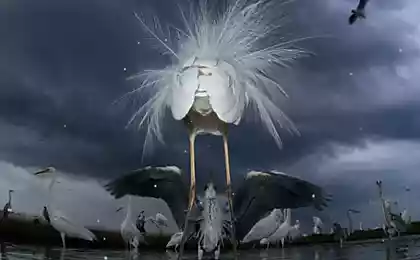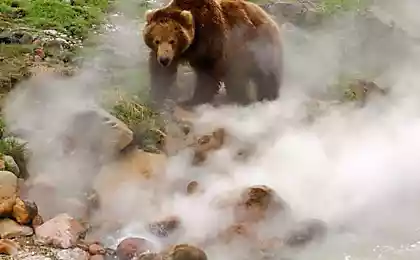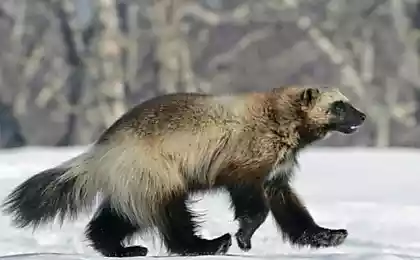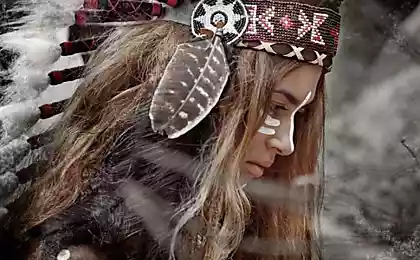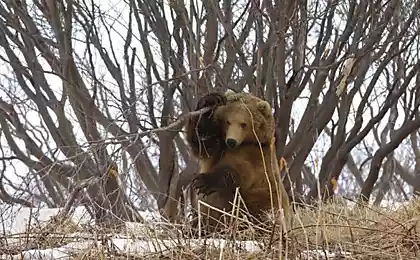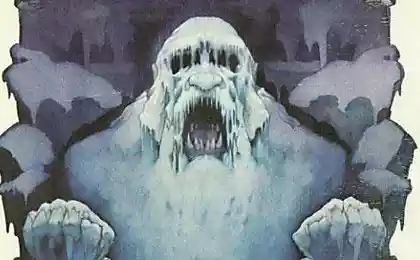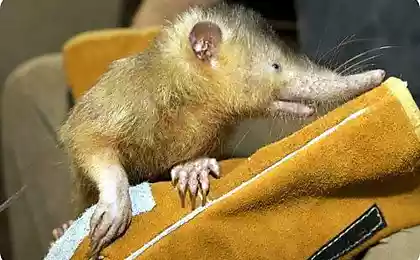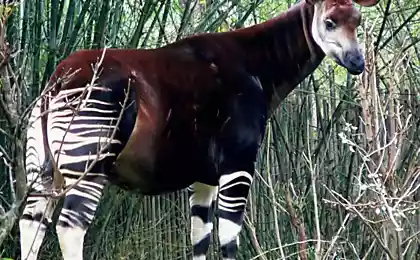4933
Strange and rare animals
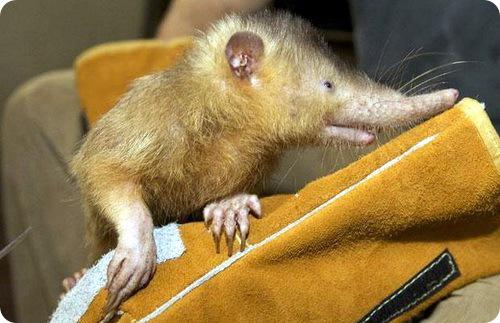
Solenodon - a mammal of the order Insectivora, are divided into two main types: Cuban solenodon and Haitian. Relatively large, compared to other types of carnivorous beast: its length is 32 cm, and the tail, on average, 25 cm, weight of the animal - about 1 kilogram, tight physique.
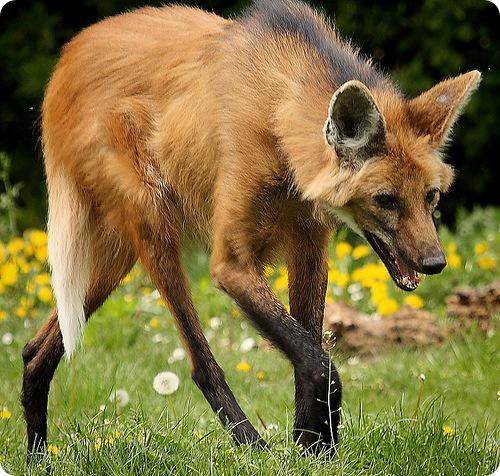
Maned wolf. Lives in South America. Long legs of a wolf - the result of evolution in matters of adaptation to habitat, they help the animal to overcome obstacles in the form of tall grass growing on the plains.

African civet - the only representative of the eponymous family. These animals live in Africa in open spaces with high herbage from Senegal to Somalia, southern Namibia, and in the eastern parts of South Africa. Dimensions beast visually strong enough may increase when Viverra raises when excited wool. A fur her thick and long, especially on the back closer to the tail. Paws, muzzle and tail end of an absolutely black, most of the body pyatnistopolosataya.
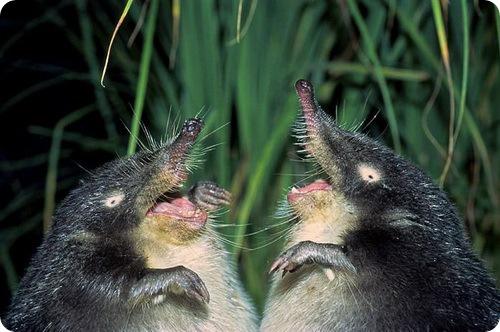
Muskrats. Animal sufficiently known, due to its great title. Just a good picture.
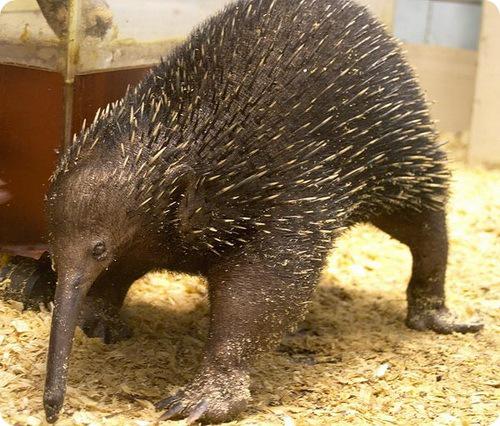
Long-beaked echidna. This natural wonder is usually weighs up to 10 kg, although there were more large individuals. By the way, the length of the body reaches 77 cm Long-beaked echidna, and that's not counting their cute five to seven centimeter tail. Any description of the animal based on comparison with a malicious: Long-beaked echidna foot above the claws powerful. Another feature of the appearance of the Long-beaked echidna - a spur on the hind legs of males and five-toed and three-toed hind limbs forward.
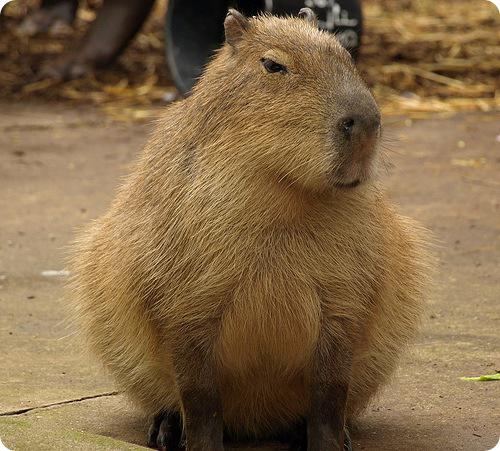
Capybara. Semi-aquatic mammals, the largest of modern rodents. Is the only member of the family vodosvinkovyh (Hydrochoeridae). There are dwarf varieties Hydrochoerus isthmius, sometimes it is treated as a separate species (small capybara).
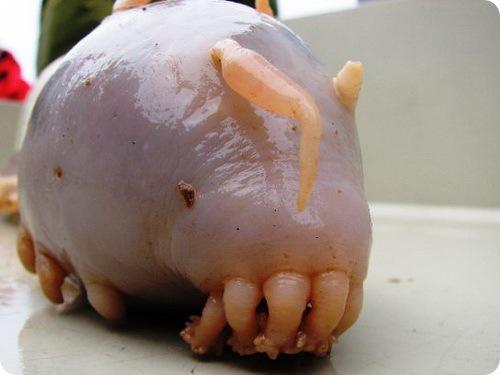
Sea cucumber. Sea cucumbers. Potbelly sea, sea cucumbers (Holothuroidea), a class of invertebrates such as echinoderms. Species used for food, are termed "trepang».
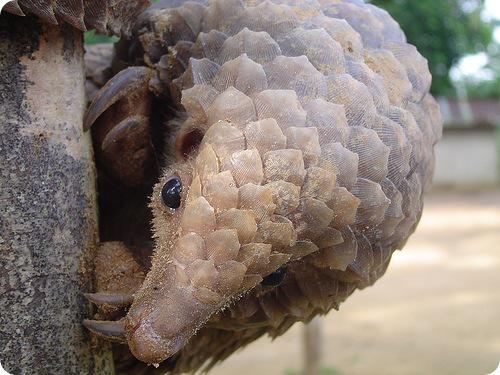
Pangolin
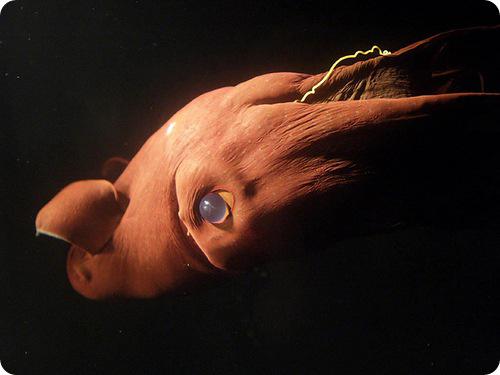
Vampire squid. Shellfish. Despite its obvious similarities with octopus and squid, shellfish, scientists have identified this as a separate detachment Vampyromorphida (Lat.), Because as soon as it has its own retractable sensitive bichevidnye filaments.
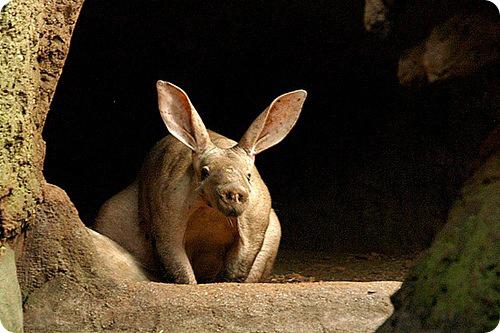
Aardvark. In Africa, these mammals called aardvark, which translated into Russian means "earthen pig." In fact aardvark in appearance very much like a pig, but with elongated snout. The ears of this amazing animal in its structure is very similar to the rabbit. Just still there and muscular tail, which is very similar to the tail of the animal like a kangaroo.

Japanese giant salamander. To date - this is the largest amphibian, which can reach 160 cm in length, weight up to 180 kg and can live up to 150 years, although officially registered the maximum age of a giant salamander is 55 years old.
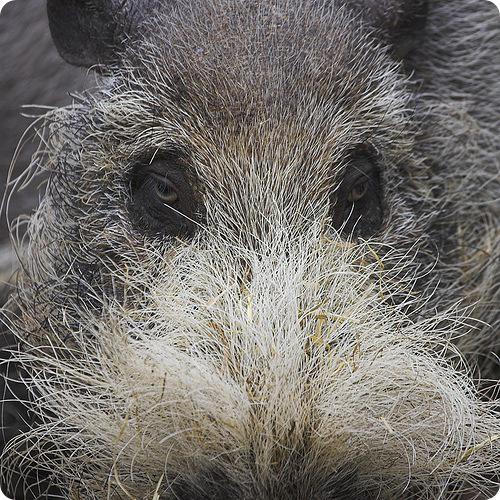
Bearded Pig. In view of different sources Bearded pig is divided into two or three subspecies. This - curly bearded pig (Sus barbatus oi), who lives on the Malay Peninsula and the island of Sumatra, Bornean bearded pig (Sus barbatus barbatus) and Palawan Bearded Pig, who live, as the name implies, on the island of Palawan and Borneo, and Java , Kalimantan and the small islands of the Indonesian archipelago in Southeast Asia.
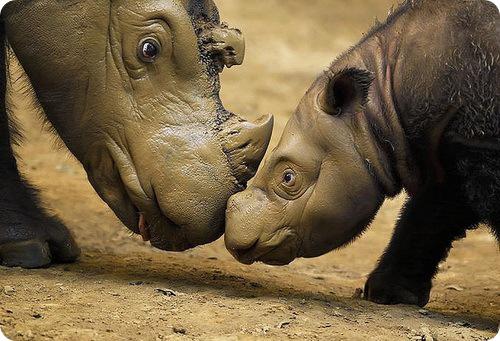
UMATRANSKIE rhinos. Belong to the family of equines animals rhinoceros. This type of rhino is the smallest of the entire family. The body length of an adult Sumatran rhino can reach 200 - 280 cm, and the height at the withers can range from 100 to 150 cm. These rhinos can weigh up to 1,000 kg.

Knobbed BEAR couscous. Wood marsupial that lives in the upper tier of lowland tropical forests. Wool bear couscous consists of a soft undercoat and coarse guard hairs. The color ranges from gray to brown, with a light-colored belly and limbs and varies depending on the geographic subspecies and age of the animal. Grasping, not woolly tail is about half the length of the animal, and serves as a fifth limb, which facilitates the promotion of a dense tropical forest. Bear couscous is the most primitive of all cuscuses that preserves the primitive dentition and structural features of the skull.
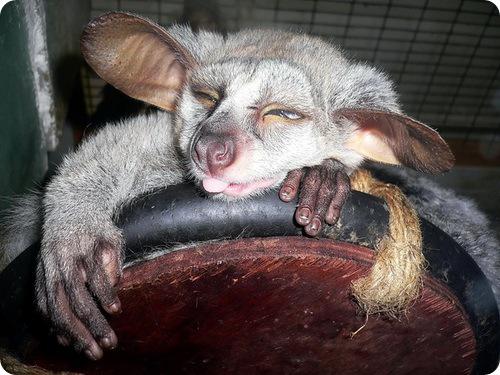
Galaga. His big bushy tail is clearly comparable with the squirrel. A charming attractive face and graceful movements, flexibility and blandness, clearly reflect his cat line. Amazing leaping ability, agility, strength and incredible agility of the animal clearly shows his nature funny cats and elusive proteins. Of course, it would be where to use their talents, because small cage for this very ill-suited. But, if you give this little animal a little freedom and sometimes allow him to walk around the apartment, all its quirks and talents will become a reality. Many even compare it to the kangaroo.

Wombat
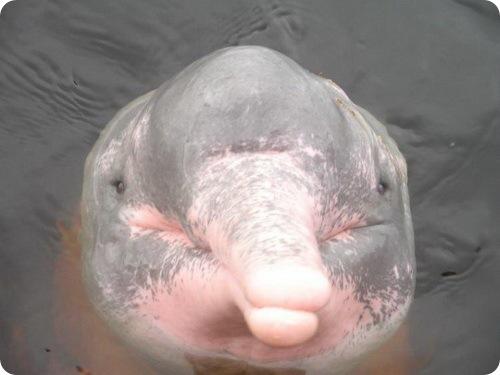
Boto. Is the largest river dolphin. Inia geoffrensis, as scientists call it, reaches 2, 5 meters in length and weight of 2 kilograms. Light gray juveniles age lighter. The body of the Boto complete, with a thin tail and narrow snout. Round forehead, slightly bent beak and small eyes - features of the species of dolphins. Boto found in rivers and lakes in Latin America.
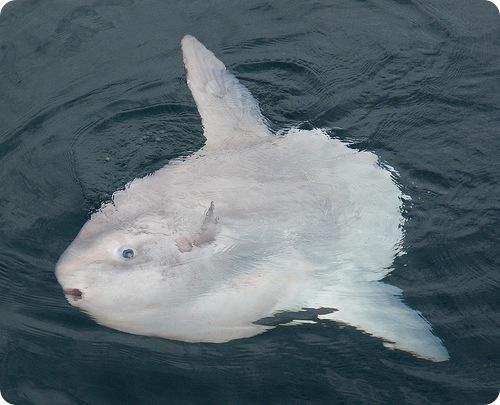
Sunfish or Mola breakwater. This fish may have a length of three meters and weigh about one and a half tons. The largest instance of fish-moon was caught in New Hampshire, USA. Its length is five and a half meters, no weight data. The shape of the body of the fish resembles a disk, it is this feature gave rise to the Latin name. A fish-moon leather has a greater thickness. It is flexible, and its surface is covered with small bony prominences. This type of fish larvae and juveniles float conventional manner. Adults large fish swim on his side, quietly moving fins. They seem to lie on the surface of the water, where they are very easy to spot and catch. However, many experts believe that the float so that only sick fish. As an argument, they cite the fact that in the stomach of fish caught on the surface is usually empty.
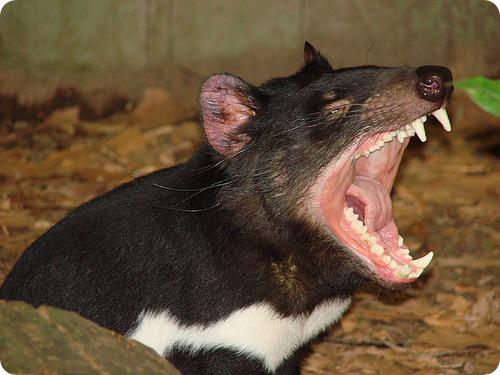
Tasmanian Devil. Being the largest of modern predatory marsupials, this animal black color with white spots on the chest and rump, with a huge mouth and sharp teeth has a stocky build and harsh temper, for which, in fact, has been called the devil. Uttering ominous cries at night, a massive and clumsy Tasmanian devil looks like a small bear: front legs slightly longer than the rear, a large head, blunt snout.
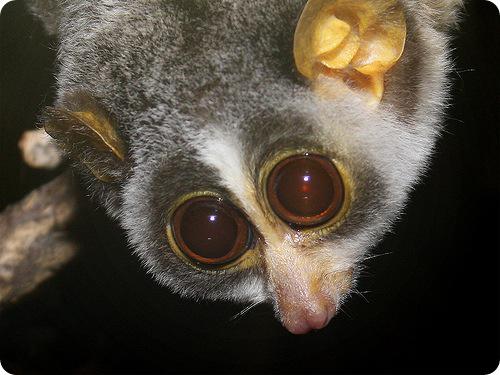
LORI. A characteristic feature of Lori - large eyes, which may edging dark circles, between the eyes has white dividing strip. Lori muzzle can be compared with the clown mask. This is most likely explains the name of the animal: Loeris means "clown».
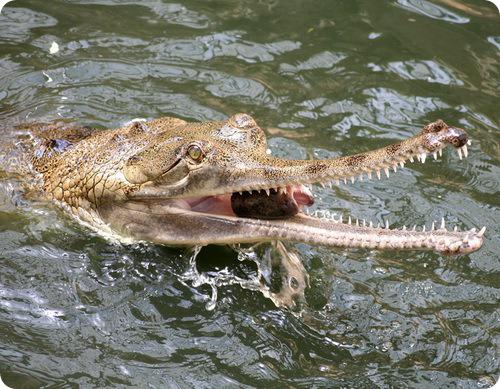
Gharial. Of course, one of the members of the order of crocodiles. With age, the face gharial is even narrower and longer. Due to the fact that the fish eats gavial, his teeth are sharp and long, with a slight inclination located for convenience meals.

OKAPI. FOREST GIRAFFE. Traveling through Central Africa, journalist and African explorer Henry Morton Stanley (1841-1904) has repeatedly faced with the local natives. Once met an expedition equipped with horses, the natives of the Congo told the famous traveler, they are found in the jungle beasts, very similar to his horses. He had seen the Englishman was somewhat puzzled by this fact. After some negotiations in 1900, the British were finally able to purchase a portion of the skin of the mysterious beast of the local population and send them to the Royal Zoological Society of London, where unknown animals was given the name "Horse Johnston» (Equus johnstoni), that is defined by its equine . But what was their surprise when a year later managed to get the whole skin and two skulls of an unknown animal, and found that it's more like a pygmy giraffe ice age. Only in 1909 was able to catch a live specimen Okapi.

VALABI. Tree kangaroo. The genus tree kangaroos - Wallaby (Dendrolagus) include 6 species. Of them live in New Guinea D. Inustus or bearish wallabies, D. Matschiei or wallabies Matchish having subspecies D. Goodfellowi (wallabies Goodfellow), D. Dorianus - wallaby Doria. The Australian Queensland are found D. Lumholtzi - wallabies Lumgoltsa (bungari), D. Bennettianus - Bennett wallaby, or tharibina. Original habitat was New Guinea, but now wallabies are found in Australia. Tree-kangaroos live in the tropical forests of mountain, at an altitude of 450 to 3000m. above sea level. The size of the animal body 52-81 cm, tail length from 42 to 93 cm. Wallaby weigh, depending on the species, 7, 7 to 10 kg male and 6, 7, 8, 9 kg. females.
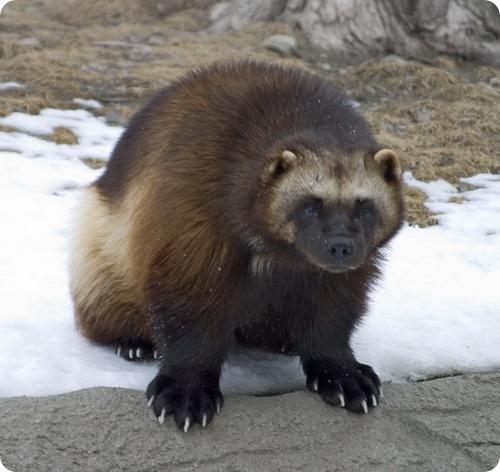
Wolverine. Moves quickly and deftly. The animal elongated snout, large head, with rounded ears. Jaws strong, teeth are sharp. Wolverine - "Megalopodidae" beast foot disproportionate relative to the body, but their size allows to move freely through the deep snow cover. On each paw and huge curved claws. Wolverine perfectly climbs trees, has keen eyesight. Voice like a fox.

Foss. Madagascar survived such animals that are not not only in Africa but throughout the rest of the world. One of the rarest animals is Fossa - the only member of the genus Cryptoprocta and the largest carnivorous mammal that lives on the island of Madagascar. Appearance Foss is a bit unusual: it is a cross between a puma and a small civet. Sometimes called Foss and Madagascar lion, as the ancestors of this animal were much larger and reached the size of a lion. Voss has a squat, massive and slightly elongated body, the length of which can reach up to 80 cm (on average it is 65-70 cm). Paws Foss long, but thick enough, the hind legs higher than the front. The tail is often equal to the length of the body and reaches 65 cm.
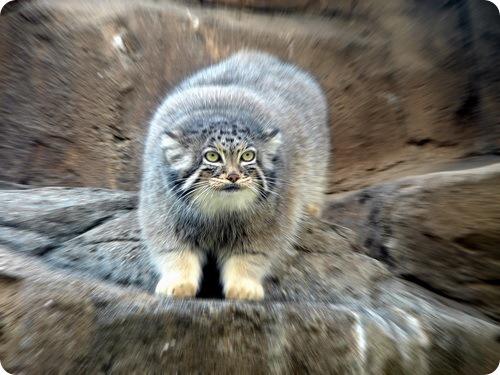
MANUL
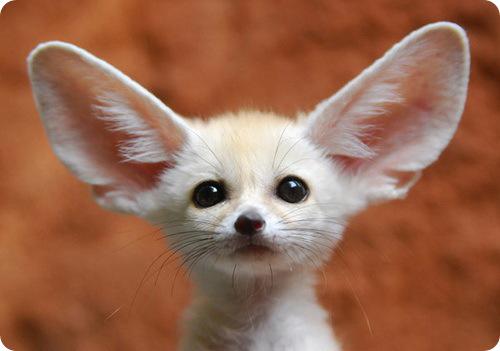
Fenech. STEPPE FOX.
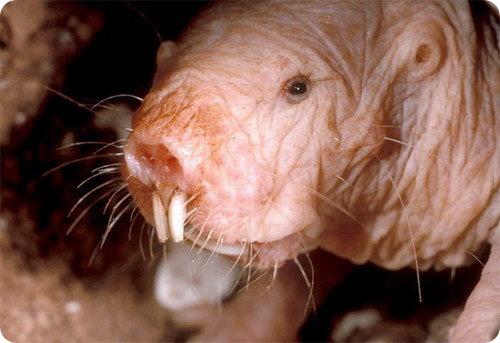
The naked mole rat
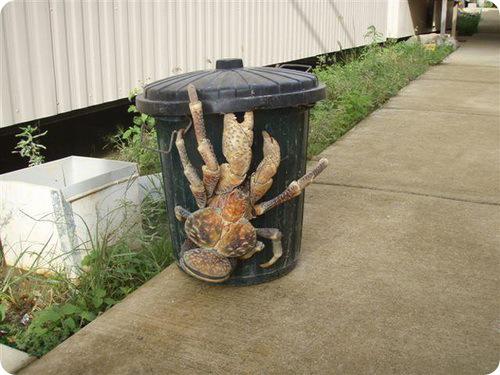
Coconut crab. The representative of decapod crustaceans. Habitat which is the western part of the Pacific Ocean and the tropical islands of the Indian Ocean. This animal is from the family land crabs large enough for its species. Body reaches adult size up to 32 cm and a weight of 3 to 4 kg. For a long time people mistakenly believe that their claws he can even split the coconuts that after eating. To date, scientists have proved that cancer can only eat already chopped coconuts. They, being its main source of food, and gave the name palm thief. Although he is not averse to eat and other types of food - fruits of plants Pandanus, organic matter from the soil, and even their own kind.
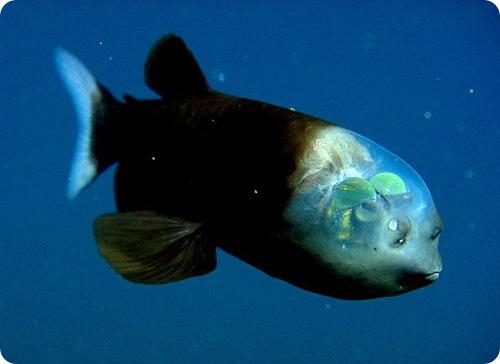
The name of this fish in Latin sounds too boring, because it is easier to call FISH with a transparent head. She has a clear head, through which she can see their tubular eyes. Head, through which the fish watching for prey, helps to protect the eyes. First opened in 1939. Lives at much greater depths, so not completely been studied. In particular, is not quite clear was the principle of the fish. It was believed that she must be very great difficulties due to the fact that it can only look up. Only in 2009 was fully investigated the structure of the eye of the fish. Apparently when trying to study it before the fish just could not stand the pressure change.
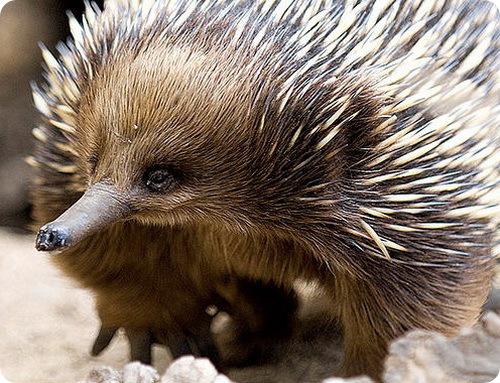
Echidna

